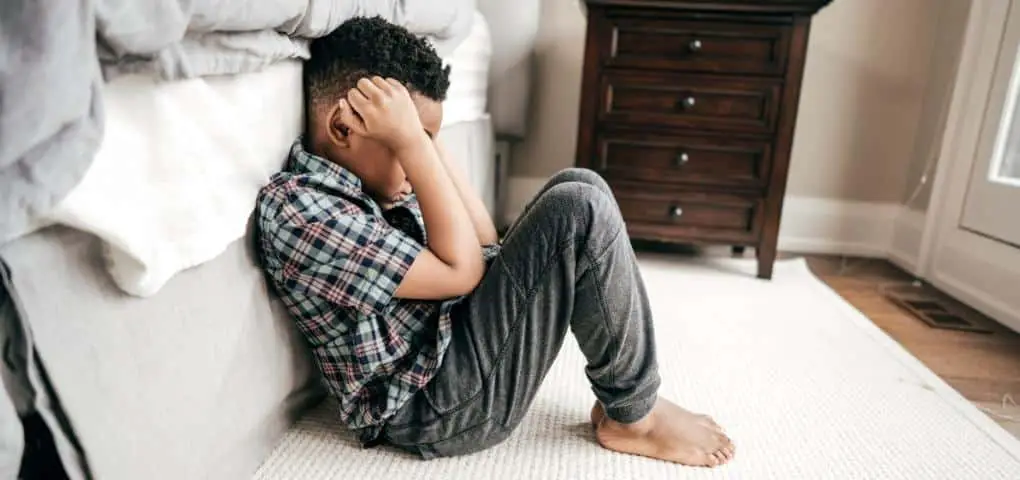
Do you know the signs of child anxiety? Many parents don’t realize that their child is struggling with anxiety until it’s too late. The good news is that there are many warning signs to look out for.
In this blog post, we will discuss childhood anxiety and help you prepare a child anxiety checklist. We will also provide tips on how to help your child if they are struggling.
What Is Anxiety in Kids?
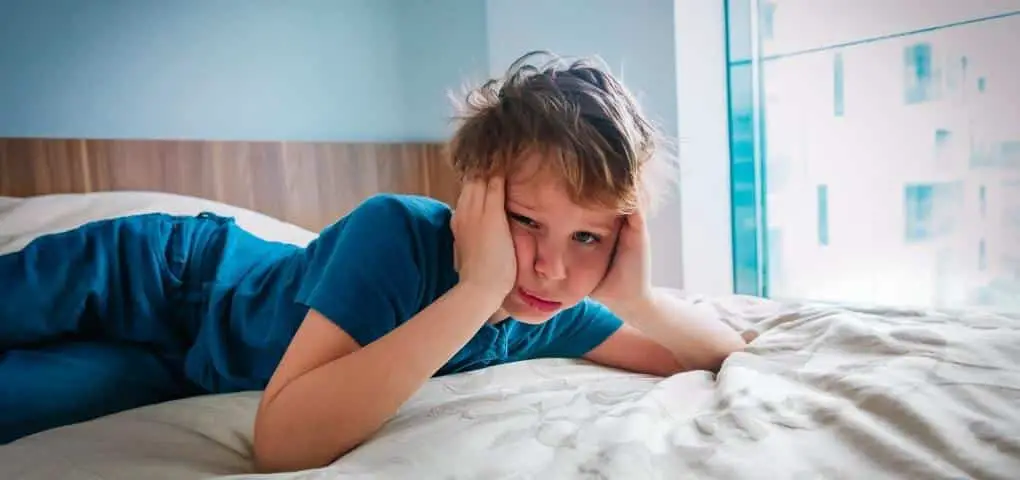
Anxiety is a normal emotion that we all feel from time to time. It’s what we feel when we’re worried or nervous about something. For kids, anxiety can be especially scary because they often don’t understand what’s happening to them. Anxiety disorders can manifest themselves in many different ways, both physically and emotionally.
Physical Symptoms Of Child Anxiety May Include:
1. Stomachaches
Unexplained stomachaches are often one of the first signs that something is wrong. If your child is complaining of a stomachache, it’s important to take them seriously and explore other potential causes. If there is no medical explanation, child anxiety may be to blame.
Anxious children will often manifest stomachaches because they are overwhelmed by feelings they can’t understand. Many anxious children cry and throw tantrums, too. Therefore, you can usually identify an anxious child with constant unexplained stomachaches that a child’s doctor can’t identify the cause.
2. Headaches
Frequent headaches could also be a sign of child anxiety. If your child is complaining of headaches, be sure to ask them about their other symptoms. If they are also experiencing stomachaches, fatigue, or difficulty concentrating, anxiety likely is to blame.
Younger children might cry and throw tantrums as opposed to older children just sulking and not talking. It’s important to remember that children’s anxiety manifests in different ways that even a child’s doctor cannot immediately pinpoint the cause.
3. Muscle Tension
Does your child seem to be constantly tense or holding their muscles tight? This could be a sign that they’re experiencing anxiety. Make sure to assess their overall body language and see if there are any other signs of tension. Always be attentive to your child’s mental health and observe certain situations that might indicate anxiety in children.
4. Sweating
Kids who are anxious may also sweat more than usual. This is because anxiety can cause an increase in heart rate and blood flow, which can lead to sweating. If your child is sweating more than usual, it’s important to ask them about their other symptoms. If they are also experiencing a racing heart, shortness of breath, or dizziness, it’s likely that they are anxious.
Waking up sweating because of bad dreams or waking up in a bad mood are also symptoms of anxiety. Make sure to ease your child’s worries so that it won’t lead to more complicated problems like depression. As a parent, you need to learn how to observe every possible symptom of anxiety disorders.
5. Shortness of Breath
Anxiety can also cause shortness of breath. This is because when we’re anxious, our bodies go into “fight or flight” mode. This means that the body prepares for danger by increasing heart rate and blood flow. This can lead to shortness of breath.
6. Rapid Heartbeat
A rapid heartbeat is also a common symptom of anxiety. This is because, again, the body is in “fight or flight” mode and is preparing for danger. If your child’s heartbeat seems to be racing for no reason, anxiety may be the cause.
Emotional Symptoms Of Child Anxiety May Include:
1. Fearfulness or Worry
Kids have no shortage of things to worry about. From school to friendships to family, there are many things that can cause anxiety in kids. If your child seems unusually fearful or worried, it’s important to explore the cause. They may be anxious about something specific.
Constant “what if” questions are also a common sign of child anxiety. For example, “What if I fail my test?” or “What if my friends don’t like me?” If your child constantly asks these types of questions, it’s a good idea to explore their anxiety further.
2. Avoidance of People or Places
If your child begins to avoid people or places, it may be a sign that they are feeling anxious. This could look like your child refusing to go to school or not wanting to leave the house. If you notice this behavior, it’s important to talk to your child and see if there is anything that is making them feel this way.
3. Irritability or Anger Outbursts
A child who is anxious may have trouble controlling their emotions. They may get angry more easily or have more tantrums than usual. If your child’s mood seems off or has more meltdowns than normal, it could be a sign of anxiety.
4. Trouble Sleeping
If you notice that your child is having trouble sleeping, it could be a sign of anxiety. Children with anxiety may have difficulty falling asleep or staying asleep. They may also have nightmares or night terrors. If your child is having trouble sleeping, talk to their doctor or mental health professional.
If you notice any of these symptoms in your child, it’s important to talk to a doctor or mental health professional. They can help your child manage their anxiety and get back to living a normal life.
How Does Anxiety Affect Kids?
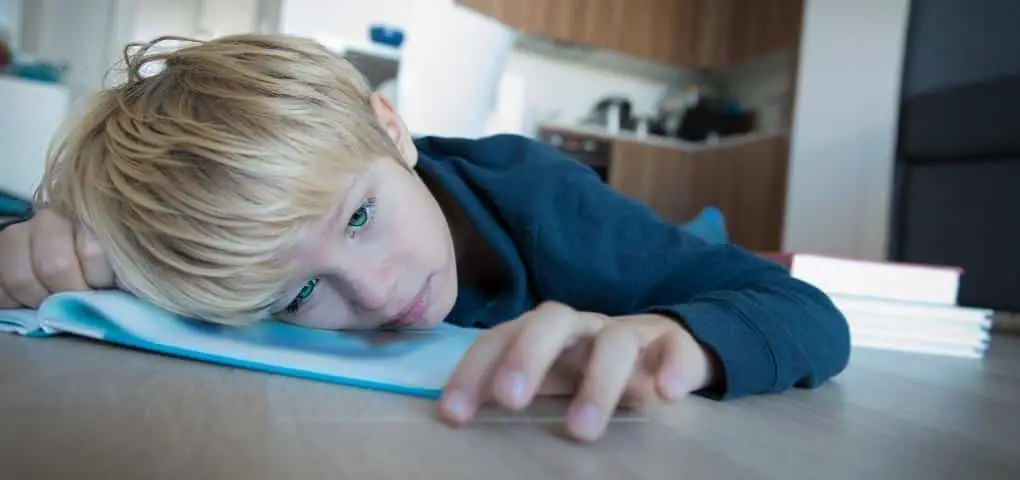
Anxiety is a normal emotion that we all experience at one time or another. It’s what we feel when we’re worried, nervous, or scared about something. For most people, anxiety is a temporary response to a stressful situation, like public speaking or taking a test. Once the event is over, the anxiety goes away.
However, some children and teens experience anxiety more frequently than others, and it can be tough for them to manage. For these kids, anxiety is more than just an occasional feeling; it’s a constant problem that affects how they live their lives.
Anxiety disorders are the most common mental health disorder in children and teens. According to the National Institute of Mental Health, about 32% of adolescents between the ages of 13 and 18 live with an anxiety disorder.
There are several different types of anxiety disorders, each with its own unique set of symptoms. Some common types include:
Generalized Anxiety Disorder (GAD)
GAD is characterized by excessive worry about a variety of topics, including school, family, friends, and future events. Kids with GAD often feel like they can’t control their worry or stop it from taking over their lives.
If your child has GAD, you might notice that they:
- Are always on edge or feeling tense
- Have difficulty concentrating or completing tasks
- Avoid activities or situations that make them feel anxious
- Experience physical symptoms like headaches, stomachaches, or fatigue
To deal with GAD in kids, doctors often recommend a combination of cognitive-behavioral therapy (CBT) and medication. CBT is a type of therapy that helps kids learn how to manage their anxiety by changing the way they think and behave. Medication can also be used to help reduce symptoms.
Obsessive-Compulsive Disorder (OCD)
OCD is characterized by repetitive and intrusive thoughts (obsessions) and behaviors (compulsions) that your child feels they must do to avoid a bad outcome. For example, a child with OCD might be afraid of germs and compulsively wash their hands repeatedly throughout the day.
If your child has OCD, you might notice that they:
- Have particular rituals or routines that they feel they must follow
- Are afraid of certain objects, animals, or situations
- Avoid activities or situations that trigger their obsessions
- Experience physical symptoms like headaches, stomachaches, or fatigue
To help a child deal with OCD, doctors might prescribe medication and/or recommend therapy. At home, parents can provide support and understanding.
Separation Anxiety Disorder
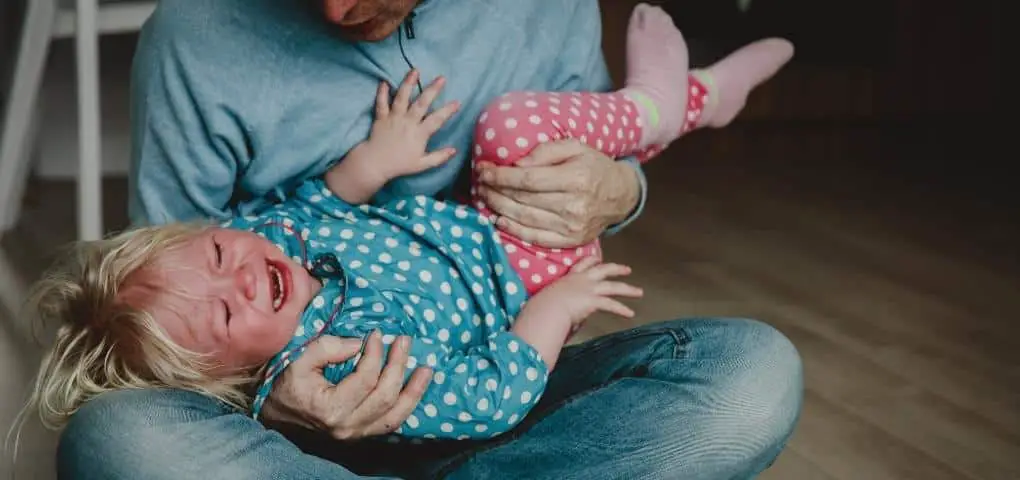
Separation anxiety disorder is characterized by excessive fear and anxiety about separation from significant people in a child’s life, like parents or other family members. Kids with separation anxiety disorder often have trouble sleeping away from home or going to school.
If your child has a separation anxiety disorder, you might notice that they:
- Have excessive fear of being away from home or loved ones
- Refuse to go to school or participate in activities away from home
- Experience physical symptoms like headaches, stomachaches, or fatigue when away from home
To deal with separation anxiety, it’s important to:
- Make sure your child feels comfortable and secure when they’re away from home
- Encourage your child to participate in activities outside the home
- Talk to your child’s teacher about their anxiety and how to best support them in the classroom
Phobias
A phobia is an intense fear of a specific object or situation, such as dogs, insects, heights, blood, or flying. Kids with phobias will go to great lengths to avoid whatever it is they’re afraid of.
If your child has a phobia, you might notice that they:
- Have an intense fear of a specific object or situation
- Avoid activities or situations that trigger their fear
- Experience physical symptoms like shaking, sweating, or difficulty breathing when confronted with their fear
To help your child deal with a phobia, doctors might recommend systematic desensitization. This is a type of therapy that gradually exposes your child to the thing they’re afraid of in a safe and controlled environment.
Selective Mutism
Selective mutism is characterized by a child’s inability to speak in certain social situations, like at school or with friends. This can be a very isolating condition as it can make it difficult for kids to participate in activities and make friends.
If your child has selective mutism, you might notice that they:
- Are able to speak in some social situations but not in others
- Avoid speaking in situations where they’re expected to talk
- Experience physical symptoms like sweating or shaking when they’re expected to talk
To help a child with selective mutism, doctors might recommend speech therapy. This is a type of therapy that can help kids learn how to communicate in social situations.
Panic Disorder
Panic disorder is characterized by unexpected and repeated episodes of intense fear. These episodes can include physical symptoms like chest pain, heart palpitations, shortness of breath, sweating, and dizziness.
If your child has panic disorder, you might notice that they:
- Have unexpected and repeated episodes of intense fear
- Avoid activities or situations that trigger their panic attacks
- Experience physical symptoms like chest pain, heart palpitations, shortness of breath, sweating, and dizziness during a panic attack
To help a child with panic disorder, doctors might prescribe medication and/or recommend therapy. Therapy can help kids learn how to cope with their anxiety and manage their panic attacks
How To Deal With Anxiety in Kids
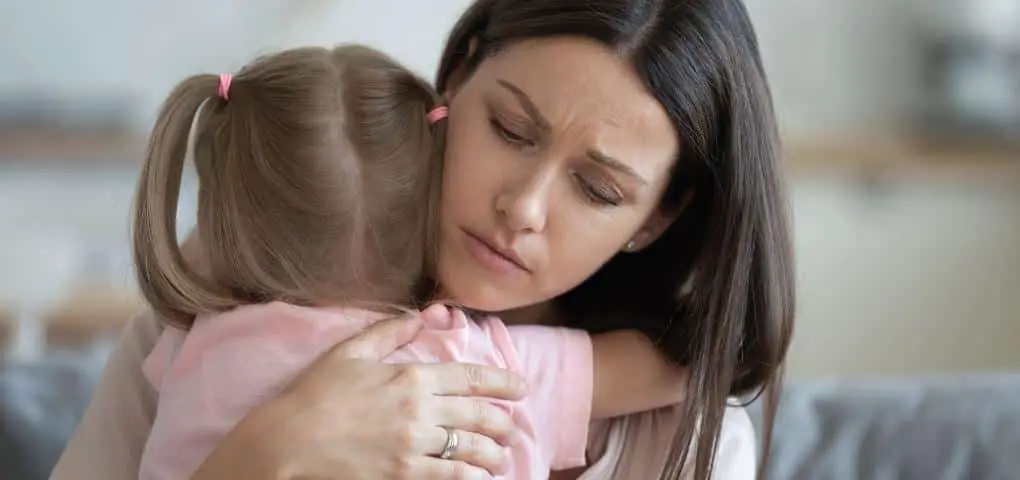
Fortunately, there are many ways to help a child struggling with anxiety. We will first explore the different kinds of anxiety therapies available and then provide some tips on dealing with anxiety in everyday life.
Cognitive Behavioral Therapy (CBT)
CBT is one of the most popular and effective forms of therapy for anxiety. CBT works by helping the child to identify and change negative thinking patterns that contribute to anxiety.
For example, a child who is anxious about going to school may think, “I’m never going to be able to make friends,” or “I’m going to fail my tests.”
With the help of a therapist, the child can learn to recognize these negative thoughts and replace them with more positive and realistic ones.
“I can make friends by being friendly to others,” or “I can study hard and do my best.”
CBT usually takes place in weekly sessions over a period of several months.
Systematic Desensitization
Systematic desensitization is another type of therapy that can be very effective for anxiety. This type of therapy works by gradually exposing the child to the things that he or she is afraid of.
For example, a child afraid of dogs may start by looking at pictures of dogs, then progress to watching videos of dogs, and eventually be able to pet a real dog.
Systematic desensitization usually occurs in therapy sessions, but it can also be done at home with the help of a parent or other adult.
Relaxation Techniques
There are many different relaxation techniques that can be helpful for anxiety. Some common ones include deep breathing, progressive muscle relaxation, and visualization.
These techniques can help the child to calm down at the moment and to feel more relaxed in general.
They can also be used as a preventative measure to help the child avoid feeling anxious in the first place.
Speech Therapy
Although not as common, anxiety can also be treated with speech therapy. This type of therapy can help the child to understand and express his or her emotions in a healthy way.
It can also teach the child coping skills for dealing with anxiety-provoking situations.
For instance, the child may learn how to ask for help when feeling overwhelmed or how to take breaks when feeling anxious.
Speech therapy usually takes place in weekly sessions over a period of several months.
Tips for Dealing With Anxiety in Everyday Life

In addition to therapy, there are many things that you can do at home to help your child cope with anxiety.
Here are some tips:
Encourage Your Child to Talk About Their Anxiety
One of the best things you can do is to encourage your child to talk about their anxiety. This will help the child to understand and express what they are feeling.
It can also help to identify any triggers that may be causing the anxiety. Make sure to listen to your child without judgment and provide support and understanding.
Encourage Your Child to Be Physically Active
Physical activity can be a great way to reduce anxiety. It can help the child to release pent-up energy and tension.
It can also improve mood and increase feelings of well-being. Try to encourage your child to be physically active for at least 30 minutes every day.
Make Sure Your Child is Getting Enough Sleep
Sleep is important for both physical and mental health. It can be hard for children with anxiety to fall asleep, but it’s important to try to encourage good sleep habits.
Make sure your child is getting enough exercise during the day and establish a bedtime routine that includes winding down for 30 minutes before sleep.
You should also avoid letting your child use electronic devices in the hour before bedtime.
Create a Relaxing Environment at Home
There are many things you can do to create a relaxing environment at home. Try to limit screen time and encourage quiet activities such as reading, puzzles, or crafts.
You should also make sure that your child has a comfortable place to sleep and that the bedroom is dark and quiet.
Encourage Your Child to Connect With Nature
Spending time in nature can be very calming and relaxing. It can help your child to feel more connected to the world around him or her.
Try to encourage your child to spend time outside every day, even if it’s just for a few minutes.
Provide Support and Understanding
One of the most important things you can do for your child is to provide support and understanding. This includes listening to your child without judgment and providing reassurance when needed.
It’s also important to educate yourself about anxiety so that you can better understand what your child is going through.
If you have any concerns about your child’s anxiety, make sure to speak to a mental health professional.
The above are just a few of the many different treatment options and tips that are available for dealing with child anxiety. If you think your child may be anxious, it’s important to talk to a mental health professional to get an accurate diagnosis and to develop a treatment plan.
What Are the Long-term Effects of Unresolved Anxiety in Kids?

If left unresolved, child anxiety can lead to a number of long-term effects. According to the Anxiety and Depression Association of America, these can include:
- Persistent worries and fears
- Avoidance of activities they once enjoyed
- Difficulty sleeping
- Poor school performance
- Social withdrawal
- Physical complaints (such as headaches or stomachaches)
- Irritability
What Are the Most Common Triggers of Anxiety in Kids?
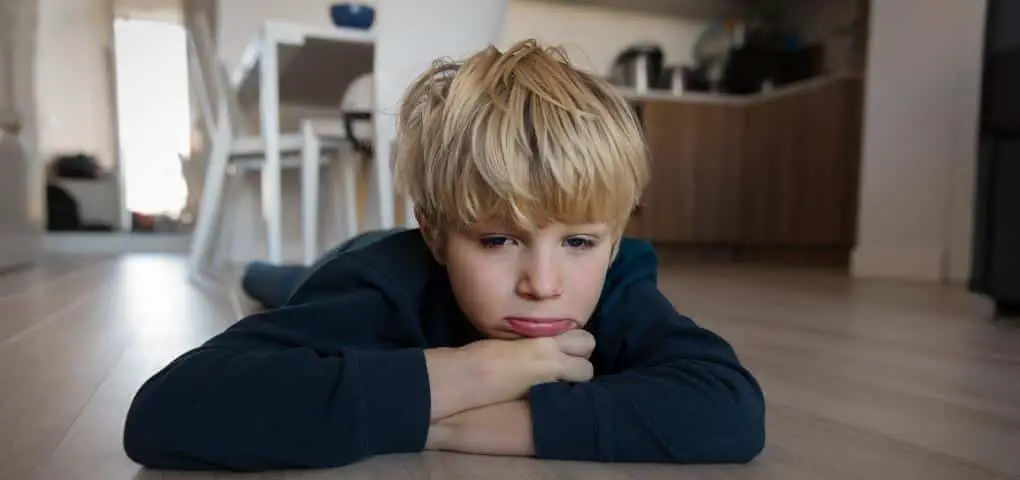
There are many things that can trigger child anxiety. Some of the most common triggers include:
Major Life Changes (Such as a Move or Starting School)
Major life changes are one of the most common triggers of child anxiety. These changes can be very overwhelming for children, which can lead to anxiety.
If your child is going through a major life change, it’s important to talk to him or her about what to expect and provide support throughout the process.
Stressful Events (Such as a Death or Divorce)
Stressful events can be very traumatic for children. These events can trigger child anxiety, which can then lead to long-term effects if not resolved.
If your child is going through a stressful event, it’s important to provide support and understanding. You should also seek professional help if the anxiety does not resolve on its own.
Traumatic Experiences (Such as Abuse or Witnessing Violence)
Children should never bear witness to violence, whether it’s in person or through the media. If your child has experienced violence firsthand, it can leave them feeling anxious and scared. If they’ve seen it on TV or heard about it from friends, they may not understand what they’re seeing and could become anxious as a result.
Either way, be sure to talk to your child about what they’ve seen and reassure them that they’re safe.
Family Conflict
Another common cause of anxiety in children is family conflict. If parents are constantly arguing or if there is any sort of violence in the home, children can pick up on that and start to feel anxious themselves. If you think family conflict may be causing your child’s anxiety, it’s important to talk to a therapist or counselor who can help mediate the situation.
These are just a few of the many different triggers of child anxiety. However, it can be very difficult for parents to identify the trigger on their own. If you think your child may be anxious, it’s important to speak to a mental health professional.
How Do I Talk to My Child About Anxiety?
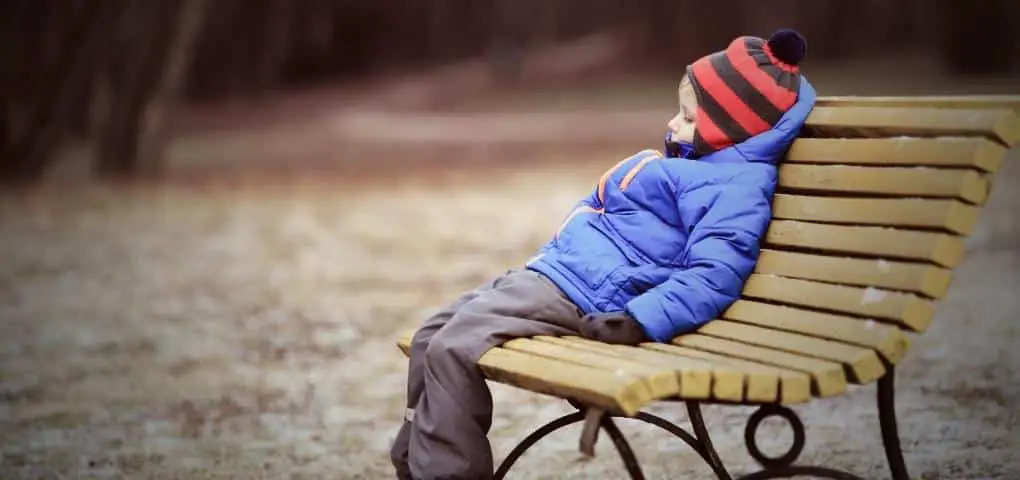
Kids might not understand why they feel the way they do, and may not be able to articulate their anxiety. As a result, it’s important to have an open dialogue with your child about what they’re experiencing. Here are some tips you might want to keep in mind when talking to your child about anxiety:
1. Avoid using phrases like “Don’t worry,” or “Calm down.”
Instead of telling your child to stop worrying, it’s important to validate their feelings and let them know that it’s okay to feel anxious. Try saying something like, “I can see that you’re feeling really worried right now.”
When your child is in the midst of an anxiety attack, telling them to “calm down” is unlikely to be effective. Instead, try focusing on helping them get through the attack by remaining calm and providing support.
2. Help them label their feelings.
Anxiety can be a difficult emotion for kids to understand, so it’s important to help them label their feelings. Try asking your child how they’re feeling, and offer some suggestions if they’re having trouble putting their feelings into words.
You might say something like, “It sounds like you’re feeling really scared right now. Is that right?”
Once your child has been able to label their feelings, you can begin to work on helping them manage their anxiety.
3. Offer reassurance and support.
It’s important to offer your child reassurance and support when they’re feeling anxious. Try saying something like, “I’m here for you, and I’ll help you get through this.”
You might also want to provide some physical comfort, such as a hug or a gentle pat on the back.
These days, kids need all the understanding and support that they can get. By keeping the lines of communication open, you can help your child manage their anxiety and avoid some of the long-term effects.
Conclusion
Anxiety in kids is a very real thing, but it’s often hard to spot. If you’re worried that your child may be anxious, take a look at this child anxiety checklist. It includes common signs and symptoms of anxiety in children. If you see any of these signs in your child, don’t hesitate to reach out to a professional for help.
Remember, child anxiety is treatable, so there’s no need to feel helpless. With the right help, your child can learn to manage their anxiety and live a happy and healthy life.
Frequently Asked Questions
What is the most common anxiety disorder in childhood?
What triggers childhood anxiety?
What is the youngest age you can be diagnosed with anxiety?
How do I know if my child's anxiety is normal?
How do I get my child to talk to me about their anxiety?
How does the child anxiety checklist help?
Check Out This Related Video
@preschooltherapy Anxiety can look different for everyone. #childmentalhealth #anxiety #childanxiety #therapistsoftiktok #preschooltherapy
♬ Can You Feel The Love Tonight - Piano Covers


Leave a Reply